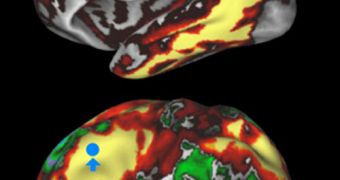All major circuits and neural pathways in the human brain will be included in a highly-detailed map of the human brain, to be created over the next 5 years with a $30 million grant.
The effort is the first of its kind, and is bound to push the boundaries of science if it succeeds. The sheer complexity of the task at hand has until now deterred those seeking to work in the field of mapping the brain.
One thing that you should know about your brain from the get go is that it features an estimated 100 billion neurons, which means that you have more cells in your brain than the Milky Way has stars.
Each individual neurons are prominences called axons and dendrites, which allows it to connect to other neurons via connections called synapses.
Many neurons can span a length of about 10 centimeters in the brain, and can connect to as much as 10,000 other neurons. In addition, all of these interactions are plastic, as in they can change at all times.
Given these immense numbers, it stands to reason that even the most advanced supercomputer today stops dead in its tracks when it comes to simulating the human brain.
But the goal of the Human Connectome Project (HCP) is the map all the major circuits in the cortex. The HCP's name is an analogy to that of the Human Genome Project, which sequenced the entire human genome some years ago.
The HCP is being led by experts at the Washington University in St. Louis (WUSL) School of Medicine (WUSM), and the Center for Magnetic Resonance Research (CMRR) at the University of Minnesota.
But the entire team features 33 experts, which contribute from nine different research institutions. The group will build custom brain scanners, supercomputers and new analysis techniques as part of the job.
All of these state-of-the-art resources will then be used to make the mapping of the brain easier, if such a word can ever be associated with this task.
“This effort will have a major impact on our understanding of the healthy adult human brain. It will also enable future projects that probe what changes in brain circuits underlie a broad variety of disorders, such as autism and schizophrenia,” says David Van Essen, PhD.
He is the lead investigator of the work. The expert holds an appointment as the Edison Professor and the head of the Department of Anatomy and Neurobiology at the WUSL.
“In the last two decades, scientists have developed a fantastic number of tools for non-invasive study of the human brain,” adds the director of the CMRR, Kamil Ugurbil, PhD.
“The connectome project will significantly advance these techniques, many of which are based on magnetic resonance imaging (MRI), and apply them to generate unprecedented insights into the connectivity and function of the brain,” adds the expert.
He is also a lead investigator on the HCP, and the McKnight Presidential Chair Professor of Radiology, Neurosciences and Medicine at the University of Minnesota.

 14 DAY TRIAL //
14 DAY TRIAL //